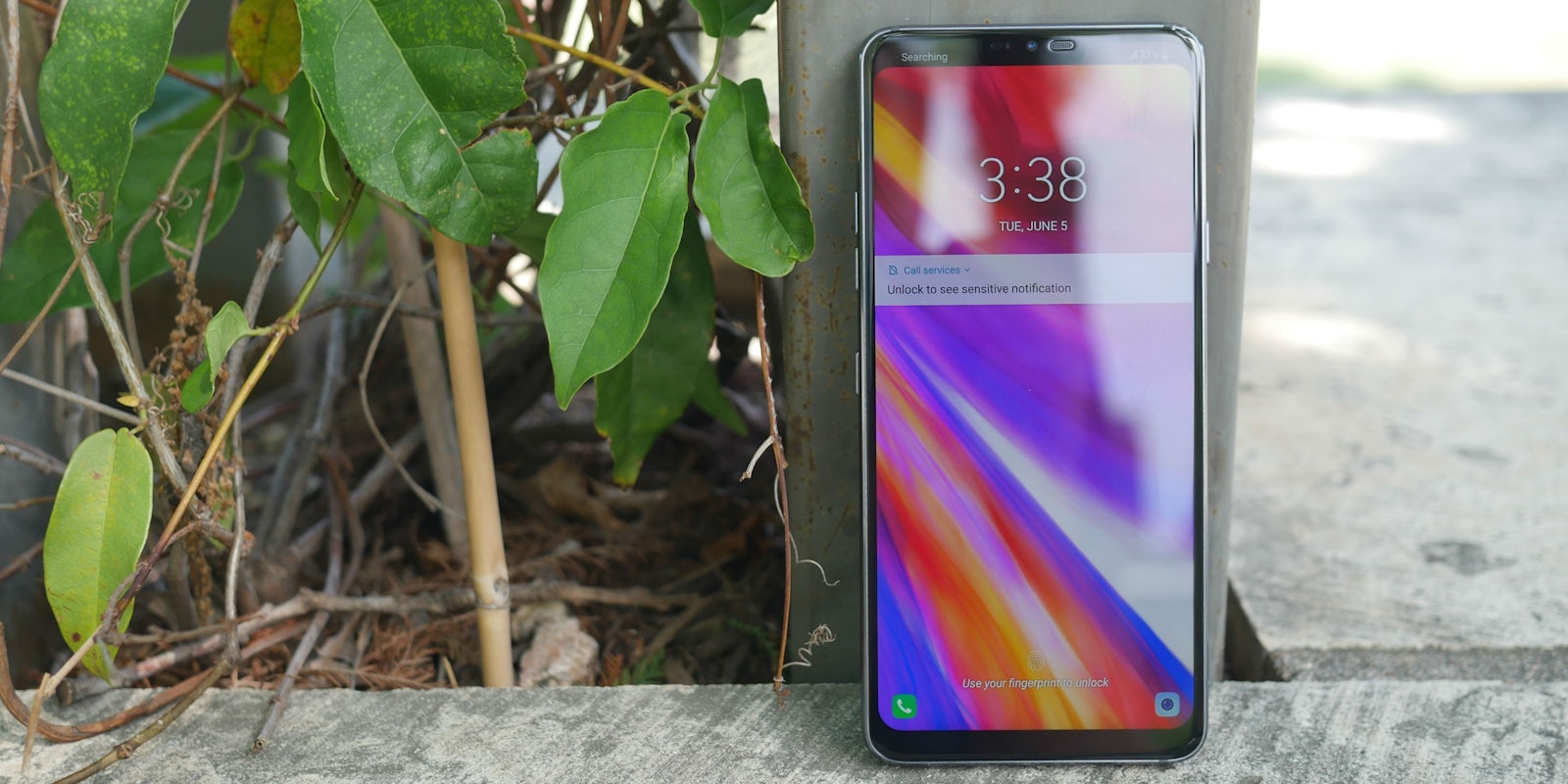Here we go again. LG finds itself trailing its rivals despite releasing a lineup of top-notch smartphones last year. Customers are too dialed into Samsung and Apple to care about what the Korean phone maker brings to the table. That proved the case with the modular G5, the edge-to-edge G6, and the V10 with its second display.
It’s clear now that if LG wants its handsets to stand out, it will need to do something radical—and it will need to do it soon. The tech giant announced it will abandon the industry-standard 12-month smartphone release cycle in favor of extending the longevity of current devices through software updates. That puts extra pressure on its newest flagship phone, the LG G7 ThinQ. This year, the company is betting on artificial intelligence (AI) to make its device stand out from the pack.
But will software smarts coupled with minor hardware enhancements raise the bar high enough, or will LG remain stuck in a vicious cycle of poor smartphone sales? Here’s our full LG G7 review.
LG G7 ThinQ cost
The G7 ThinQ costs $750 unlocked at most major online retailers. In the U.S., you can buy the device on contract from Sprint, T-Mobile, Verizon, and U.S. Cellular. AT&T customers are out of luck since the mobile carrier will skip the G7 ThinQ for the exclusive LG V35 ThinQ ($950). The price of the G7 on other carriers varies.
On Verizon, the G7 ThinQ costs $750 outright or $31.24 a month for two years. T-Mobile sells the G7 for the same total price but offers better financing at $30.00 a month. Sprint has the priciest figures, with the G7 ThinQ going for $792.00 or $33.00 a month.
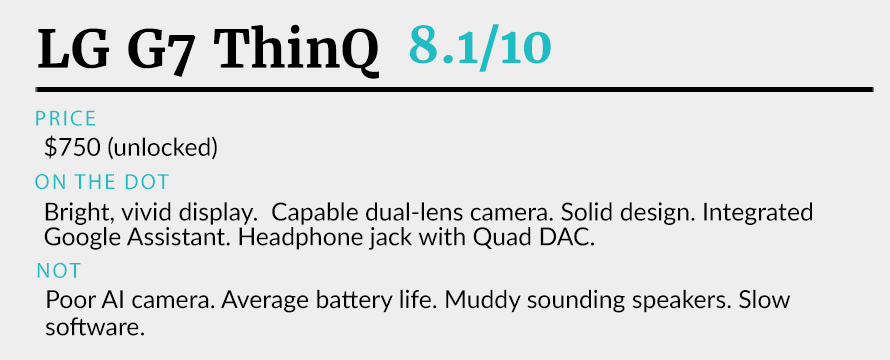
LG G7 ThinQ design
The G7 ThinQ (pronounced Thin-Q, not “think” like you’d expect) looks similar to the G6 and V30 when compared side-by-side. That’s both a result of LG keeping a consistent design language across its products and the nature of where smartphone design is headed. Like other recently released flagships, the G7 ThinQ has slim bezels thanks to an edge-to-edge display (a trend LG started, it’s worth noting). This time around, LG opted for the now infamous iPhone X-style cutout, or “notch,” at the top of the display to accommodate sensors and a front-facing camera. It’s becoming an increasingly popular (albeit user-hostile) design decision, much like nixing the headphone jack. All we can do is get used to it.

Fortunately, we didn’t find the notch distracting when viewing videos or browsing the web. Even if it was, LG has a setting that blacks out the spaces next to the cutout to make the top of the display appear flush. You can also change the colors of those side panels, though we’re not sure why anyone would do that. While this seems like a good solution to the controversial display shape, it’s poorly executed. For whatever reason, the notch reappeared in apps and some settings menus.
Flip the device around and you’ll find a familiar LG design. The circular fingerprint sensor remains in an easy-to-reach spot in the center of the phone and its glass/aluminum build is still a fingerprint magnet. What LG continues to do well is keep its phones extremely lightweight. The G7 is no exception at just 162 grams. That’s a big perk because you’ll want a case to protect its front-and-back glass panels. The G7 (6.03 inches) is a good deal larger than the G6 (5.86 inches) and even V30 (5.97 inches).
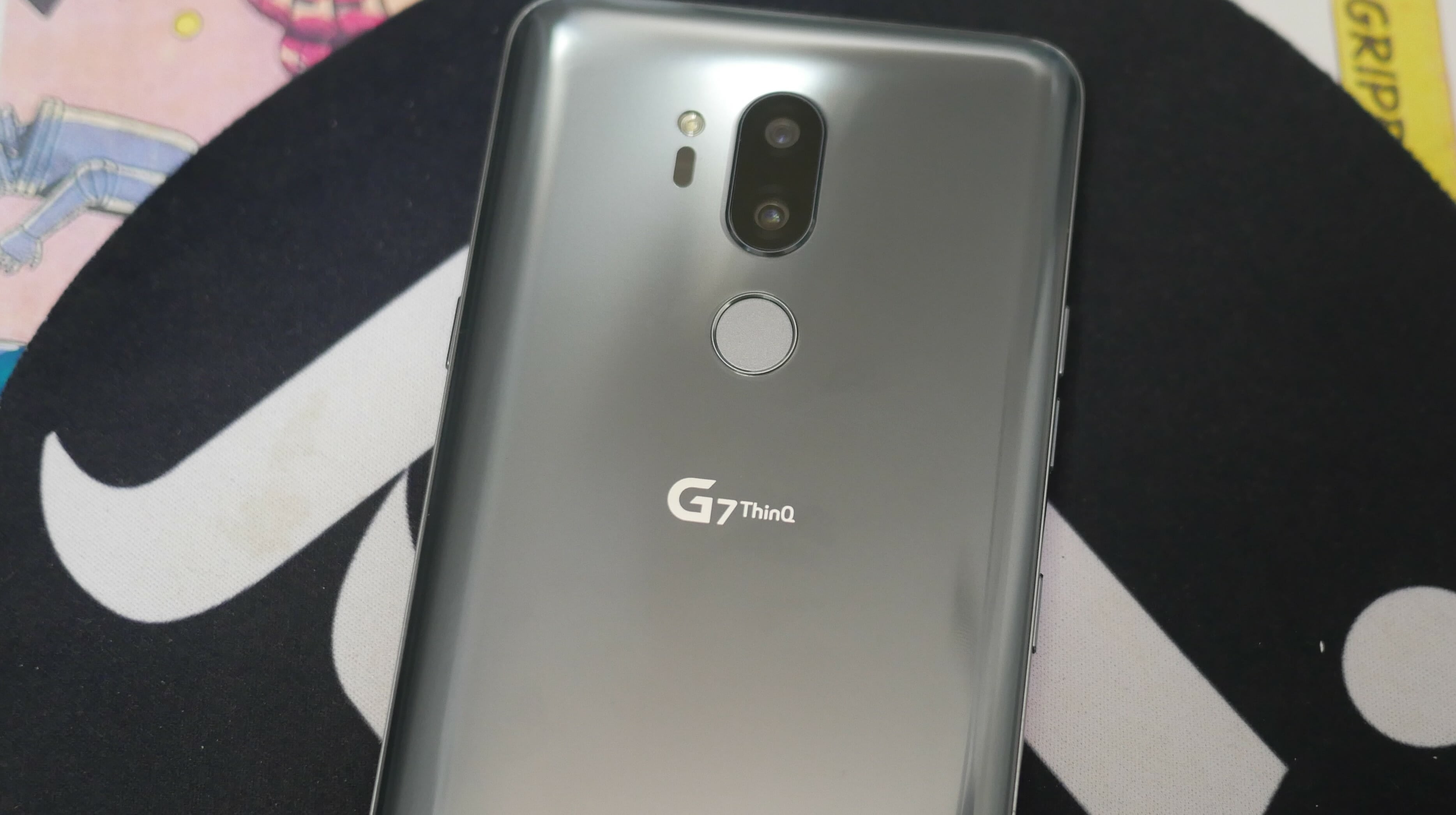
There are three minor design changes debuting on the G7. First, the dual-lens cameras now sit in a vertical orientation, unlike the G6 or V30. Also, the rear fingerprint sensor no longer doubles as a power button, which now sits on the right side of the phone. Perhaps the most significant change is the addition of a dedicated Google Assistant button on the left side of the phone under the volume buttons. This gives you quick access to Google’s excellent AI helper along with 32 device-specific commands. That said, there’s nothing special about the G7 ThinQ’s design. It’s the same thin and long slab as its predecessors.
A few other things to note: The G7 ThinQ is IP68 waterproof rated, there is a headphone jack (more on that below), and it comes in gray, black, blue, and a pinkish purple color called Raspberry Rose.
READ MORE:
- The best smartphones of 2018, ranked
- Review: The LG G6 holds its own against the iPhone 7
- Review: The LG V30 is the best smartphone of 2017 (so far)
- Review: The iPhone X is worth its $1,000 price tag
LG G7 ThinQ display
The questionable OLED display on the V30 is nowhere to be found on the G7, and that may be for the better. Its 6.1-inch high-resolution 3,120×1,440 LCD display is gorgeous and easily among the best non-OLED panels we’ve seen.
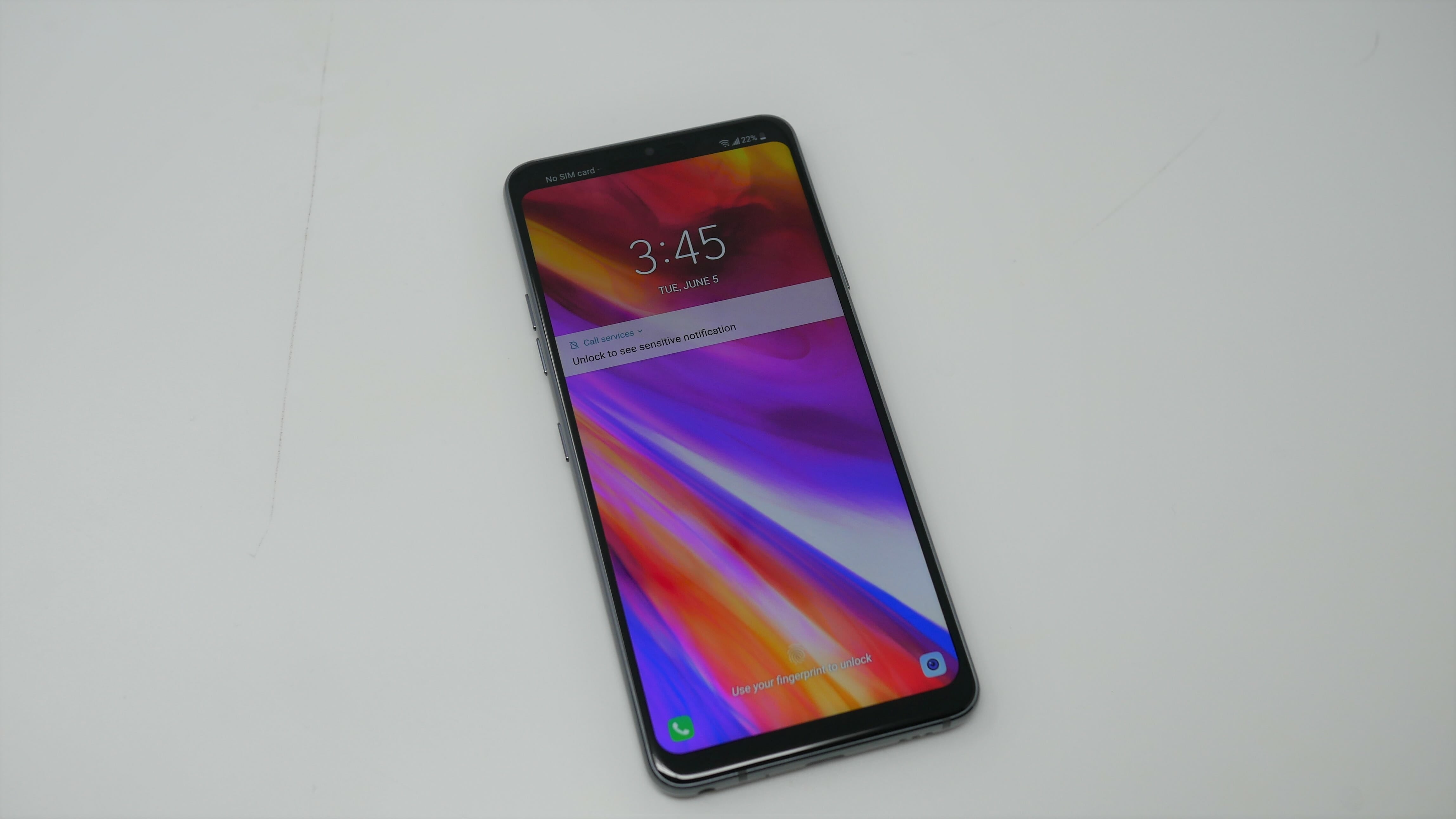
While the G7’s display doesn’t break any new ground, it also doesn’t exhibit some of the unfortunate drawbacks we’ve seen from OLED in recent times. The G7 has a superior white balance to the yellow-tinged V30, and color shifting—when the display changes colors when viewed at an angle—isn’t as bad on the G7 as it is on the Pixel 2 XL. But the missed benefits of OLED shouldn’t be overlooked. Black levels on the G7 cannot keep up to the V30, appearing dark grey in side-by-side tests. OLED displays also have wider color gamuts and higher contrast ratios.
While it may not be as eye-popping as the Galaxy S9 or iPhone X, the G7’s panel looked fantastic when I viewed E3 gameplay of Battlefield V. Colors were rich and vibrant as the fighting intensified in the snow-covered war zone. I was equally pleased watching the trailer for Wreck it Ralph 2 as the unlikely duo pranced their way through a colorful internet world.
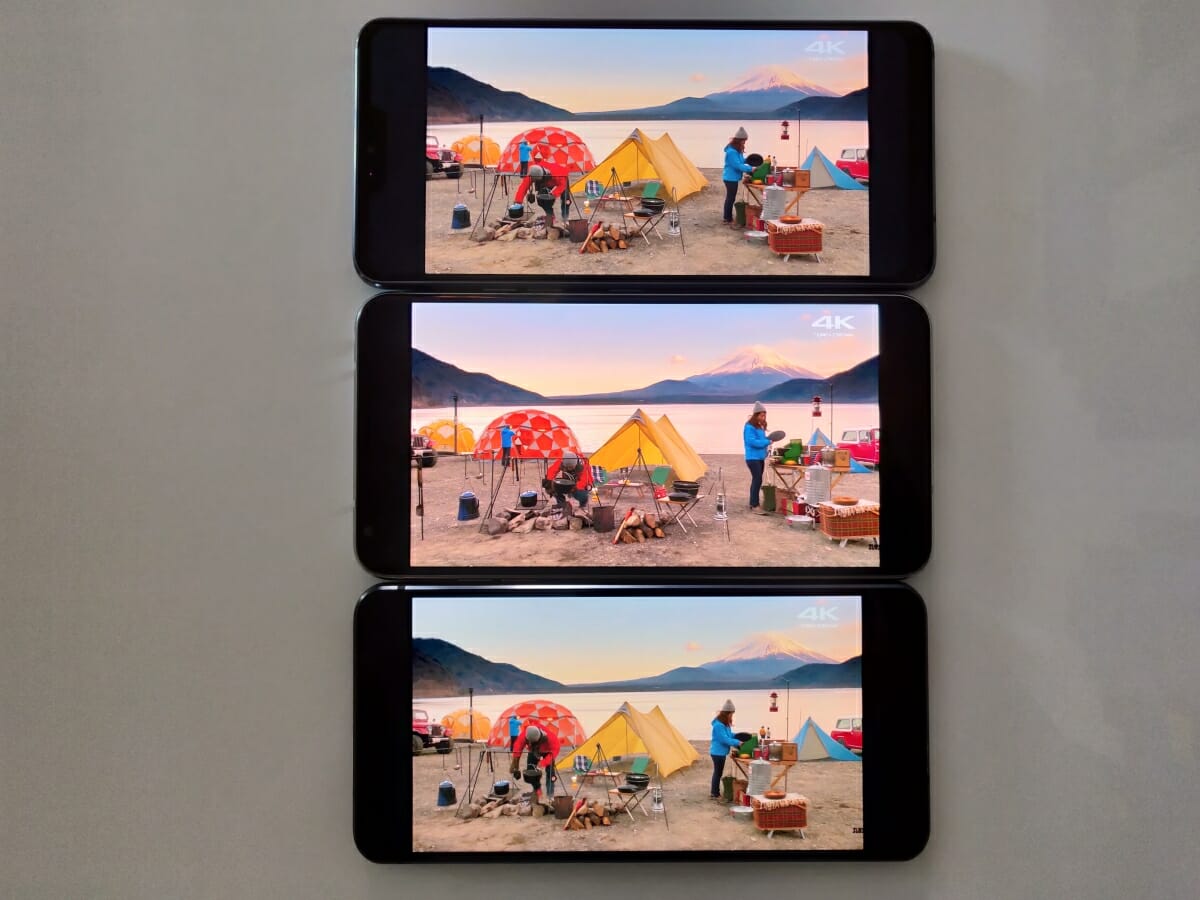
One benefit of LCD over OLED is increased brightness levels. LG claims the G7 can reach an incredibly high 1,000 nits of brightness. (For those who don’t know, nits is a measurement for the amount of light that gets sent to your eye in a given area.) While we weren’t able to test those claims, the G7 did a commendable job keeping the screen bright enough to view under a scorching Texas sun.
LG G7 ThinQ software
While we generally liked the V30’s hardware, the software tweaks LG made to Android left much to be desired. It looked dated, felt clunky, and set an otherwise excellent device behind the competition. We’re happy to report the G7 ThinQ is a marked improvement. The app drawer now opens with a swipe up, icons have been modernized, and there is less bloatware. I also like how swiping right on the main page opens Google News.
Many of these beneficial changes are thanks in large part to Android 8.0 Oreo. LG promises to be better with rolling out software updates, so let’s hope its devices soon receive Android 9.0 P, which is shaping up to be a significant release.
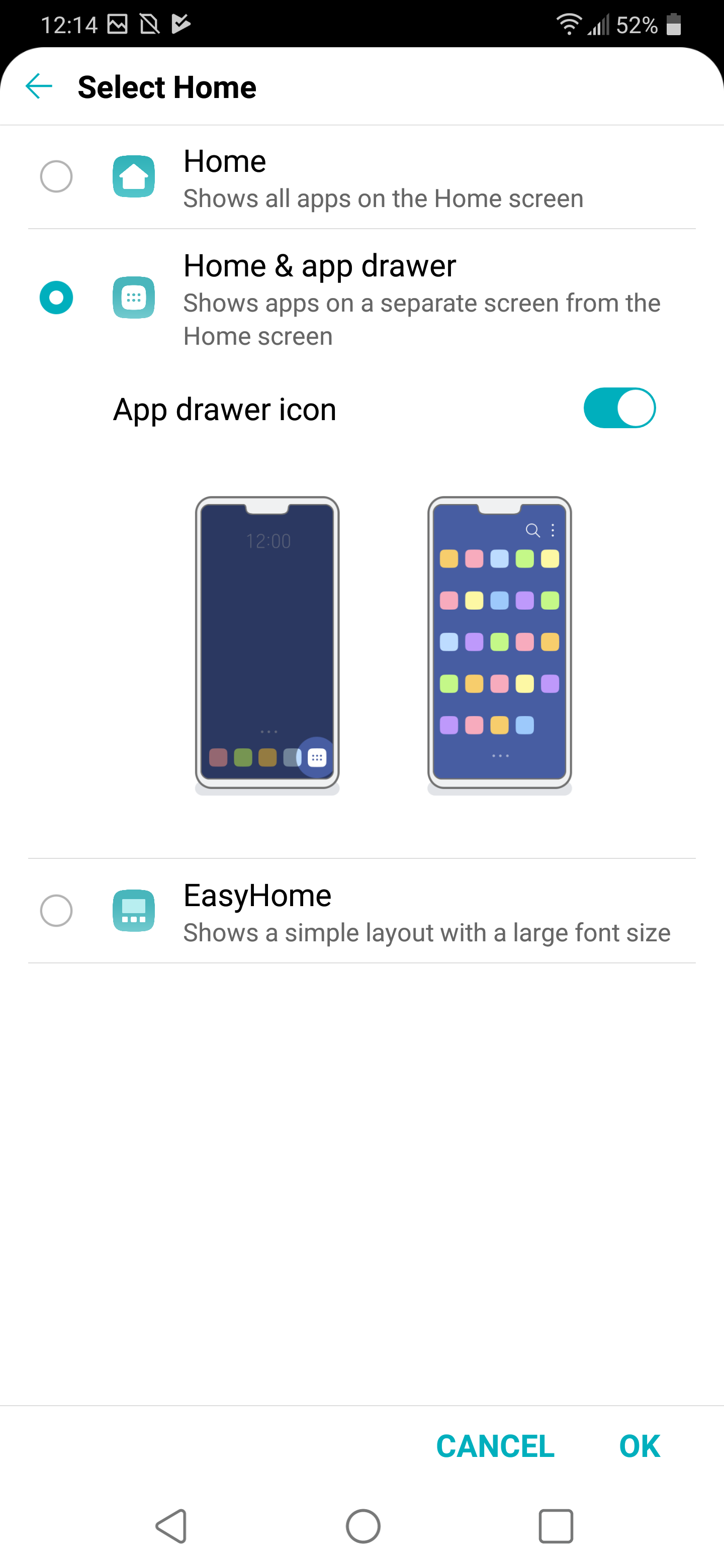
Sadly, the notification page, accessed by swiping down from the home page, is still as useless as it was before. And LG continues to drop the app drawer by default, forcing you to manually add it from the settings.
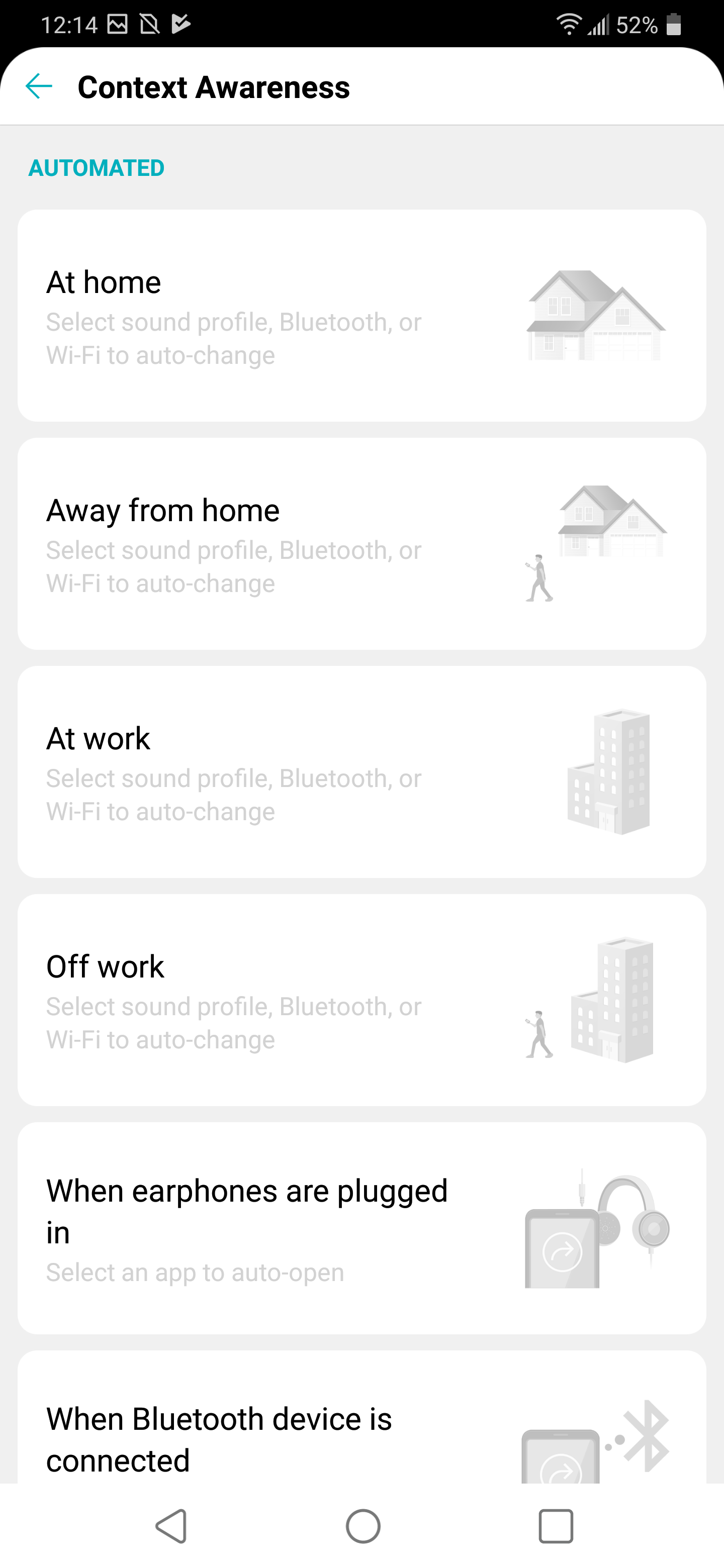
What makes the G7 stand out from past LG devices is its emphasis on AI, which is mistakenly becoming an umbrella term for unique ways to integrate connected products. The truth is, aside from the aforementioned improvements, the G7 ThinQ’s software isn’t all that different from what we’ve seen before. KnockOn, the always-on display, and Context Awareness for automating tasks are still among the best-included features. The AI-based additions, at least at launch, only relate to the camera experience and dedicated Google Assistant button.
READ MORE:
- The 8 Android P features we’re looking forward to
- 5 Android P feature that will make you reconsider iOS
- Here’s why you should be using Google Photos
- 16 essential Android apps that everyone should own
LG G7 ThinQ Performance
LG isn’t making the same mistake it made with the G6, equipping the G7 ThinQ with the latest Qualcomm Snapdragon 845 system-on-a-chip (SoC). That’s the same one found on the Galaxy S9. The result is a phone that feels snappy and can easily play the latest apps and games. That said, some of the animations felt slower than on other phones, and some proprietary software features were sluggish to load.
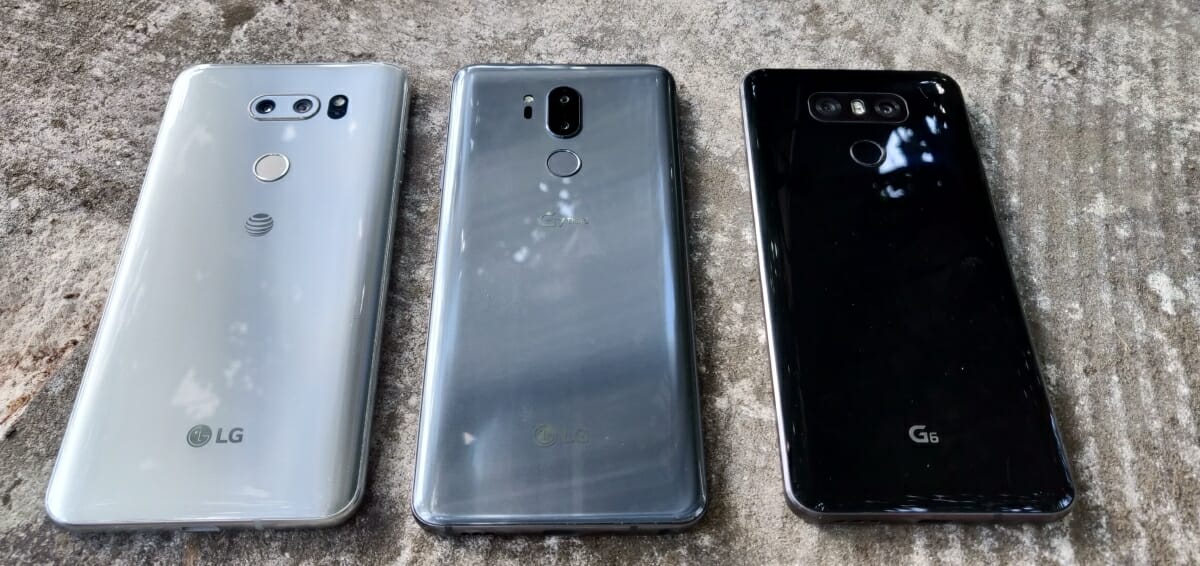
The Pixel 2 XL, with the same 4GB of RAM and an even older processor, feels much snappier than the G7 ThinQ, thanks to its streamlined Android operating system. Despite these frustrations, my experience navigating the G7 ThinQ was a positive one. Still, we’re hoping LG continues to strip down its custom software next time around so its hardware doesn’t have to work as hard.
LG G7 ThinQ camera
LG has released some fantastic camera phones over the years, but it remains an underdog to Samsung and Apple. iPhone and Galaxy devices continue to feed Instagram and Facebook with gorgeous images. But don’t be fooled: The dual 16-megapixel cameras on the G7 ThinQ are, in most cases, just as capable of producing social media-worthy photos.
LG cameras have always done an excellent job taking super close-up macro shots. The G7 ThinQ lives up to the name. It was able to focus on this flower from just a few centimeters away. It’s a good picture if you can ignore some extreme oversaturation.

LG thinks its camera can stand out from the competition with AI that determines what it’s looking at and adjusts accordingly. The AI camera did a good enough job recognizing objects but didn’t know how to apply that knowledge to create a better image.

Take, for example, this photo of a distant Austin skyline. The original image (above) looks great, with impressive dynamic range and balanced tones. The AI version is completely oversaturated, bordering on unnatural.

With AI turned off, the G7 ThinQ did a surprisingly good job capturing low-light images with minimal noise. I’d happily post these Dreamhack shots to my Instagram without any editing.
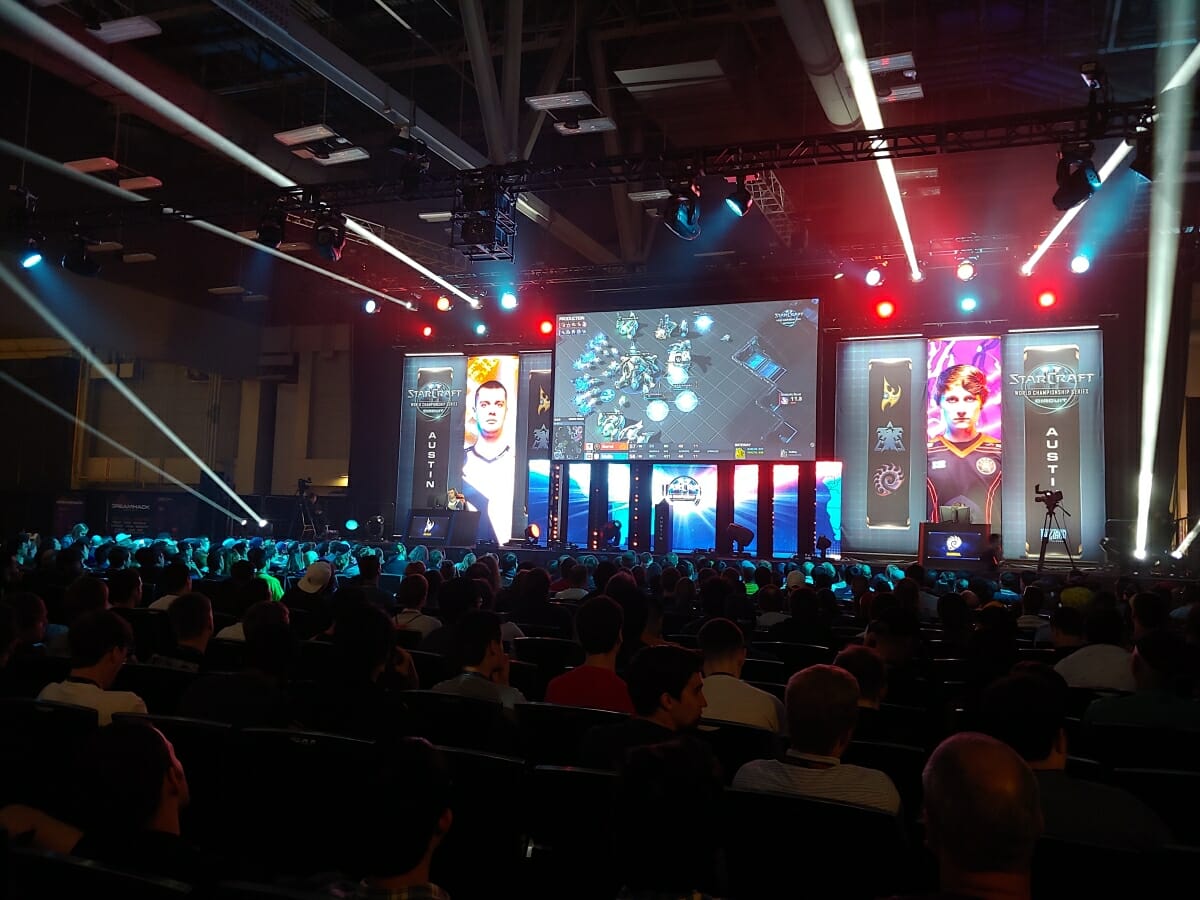
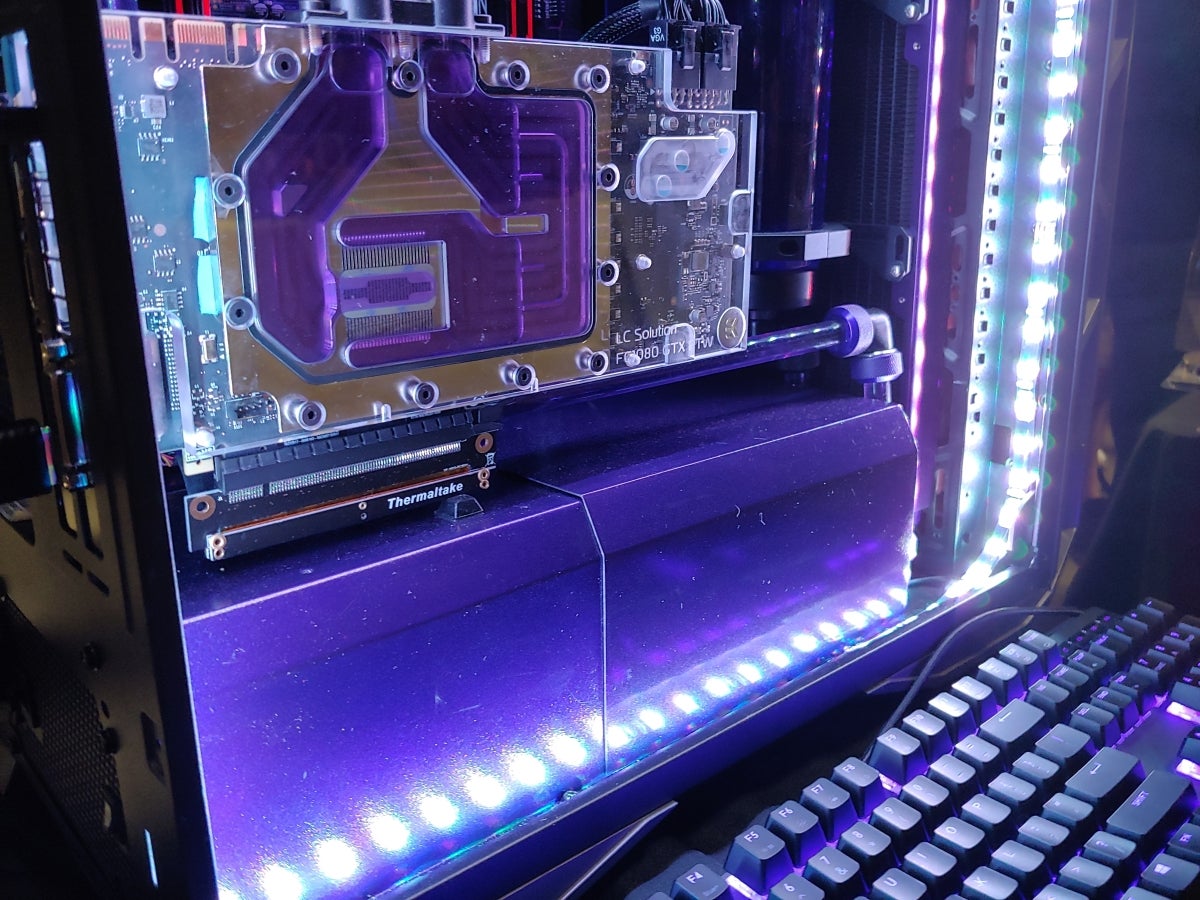
Portrait mode, which artificially blurs the background to make a subject appear sharper, is a nightmare to use on the G7 ThinQ. It took several minutes to find the perfect distance from a subject for it to kick in. Once it did, the results were good.
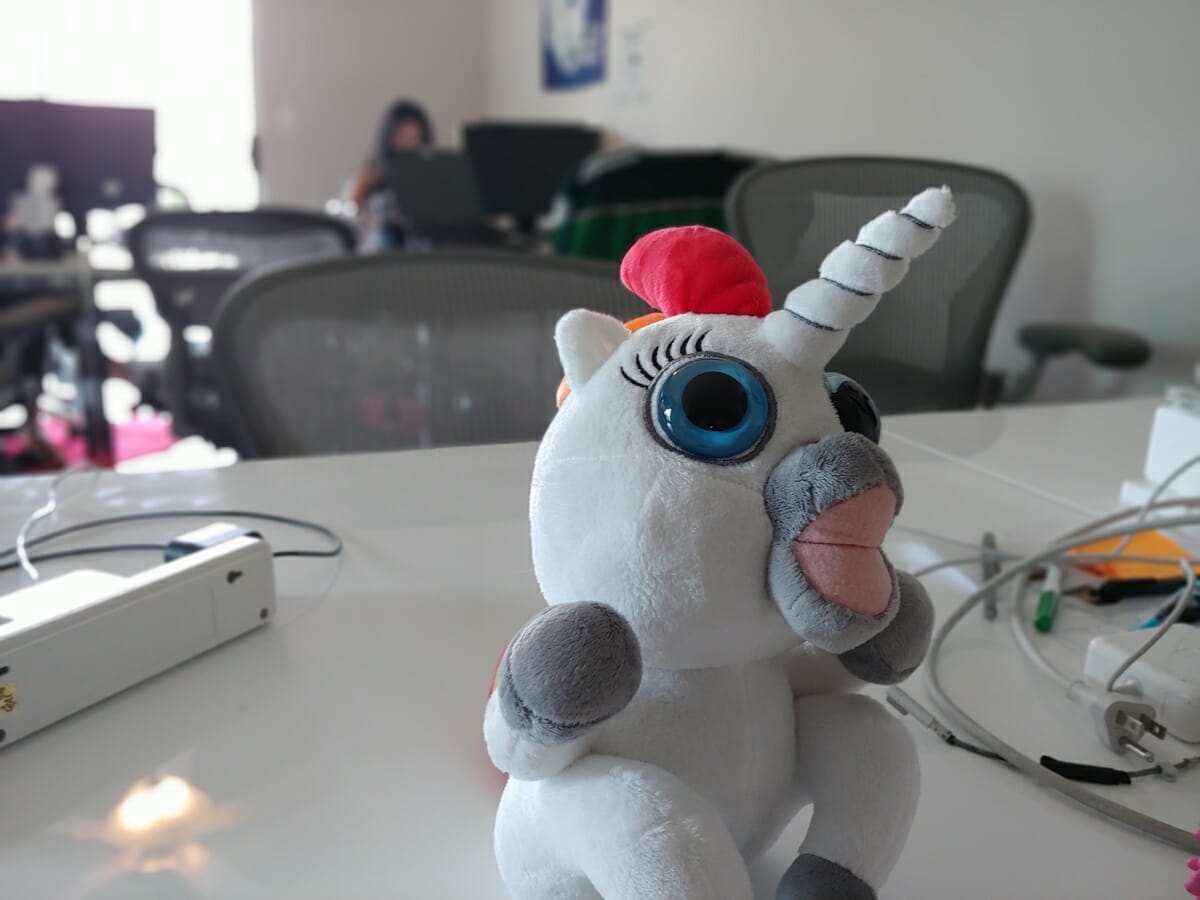
Returning from past LG phones is the super-wide-angle secondary rear lens. LG is the only major phone maker who opts for the wide focal length in favor of a telephoto zoom lens. They each have their benefits, but I find myself using the wide-angle lens on LG phones more than I do the telephoto on its rivals. Here is that same photo from before but taken with the secondary camera. AI is enabled in this photo, as you might have guessed.

The 8-megapixel front-facing camera on the G7 ThinQ is solid, and, therefore, miles ahead of the dismal 5-megapixel snapper on the V30. The images below capture a good amount of detail and are well exposed. The AI image on the left agreeably gives me a better tan, though I concede it’s not true-to-life.

READ MORE:
- Google’s Project Fi is the best cellphone plan you’re not using
- The best Project Fi phones, ranked
- Free reverse phone lookup with Google: How it works
- The best texting games to play when you’re bored
LG G7 ThinQ audio
With its new “Boom-Box” speakers, the G7 ThinQ uses its interior space as a resonance chamber to output music that is supposed to be “10 times louder” than the average smartphone. While it’s certainly capable of filling a small room with average sound, we find those claims to be rather generous. The resonance chamber does make a difference, and you’ll even feel it shaking the phone at higher volumes, but it’s a case of quantity over quality.
The G7 sounds significantly worse than the OnePlus 6 and Pixel 2 XL, booming out hollow vocals and muddy instruments. There’s a lack of coherence in the sound that left me wanting to run to the electronics store to buy the first Bluetooth or Wi-Fi speaker I came across.
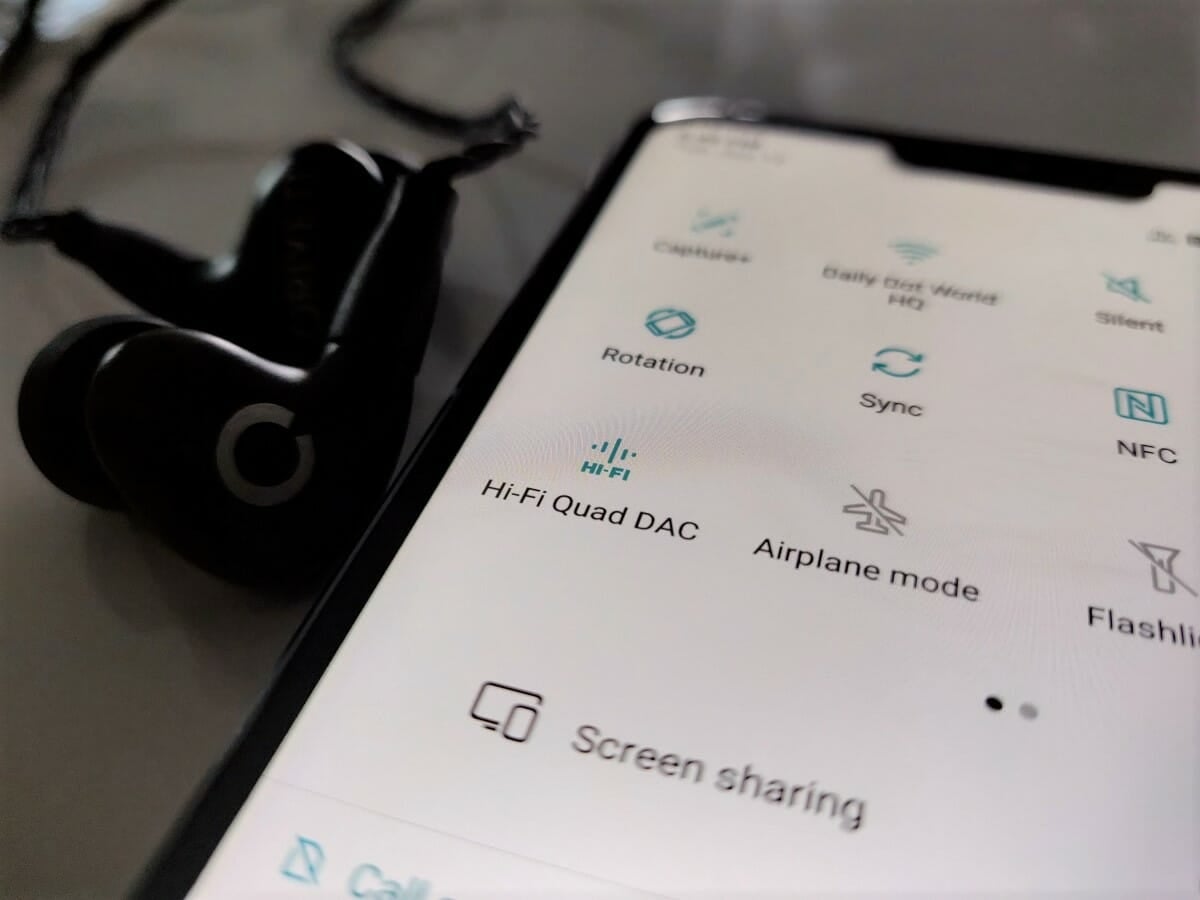
Despite its poor speaker quality, The G7 ThinQ is sure to be a fan-favorite among audiophiles who cherish their high-end headphones. Not only does it include a 3.5mm headphone jack for wired headphones, but it also comes with the company’s signature Hi-Fi Quad DAC for improved audio fidelity.
LG G7 ThinQ battery life
Battery life on the G7 ThinQ is average. The phone will last a full day on a charge, but you’d regret not plugging it in overnight. Phone makers haven’t made any substantial breakthroughs in recent years to increase battery life, but we at least expect to see minor improvements on new phones. That’s not the case with the G7 ThinQ, which lasted about as long as the G6 but fell short of the V30 in our testing. The 3,000 mAh battery drained to 15 percent after a full day of medium use.
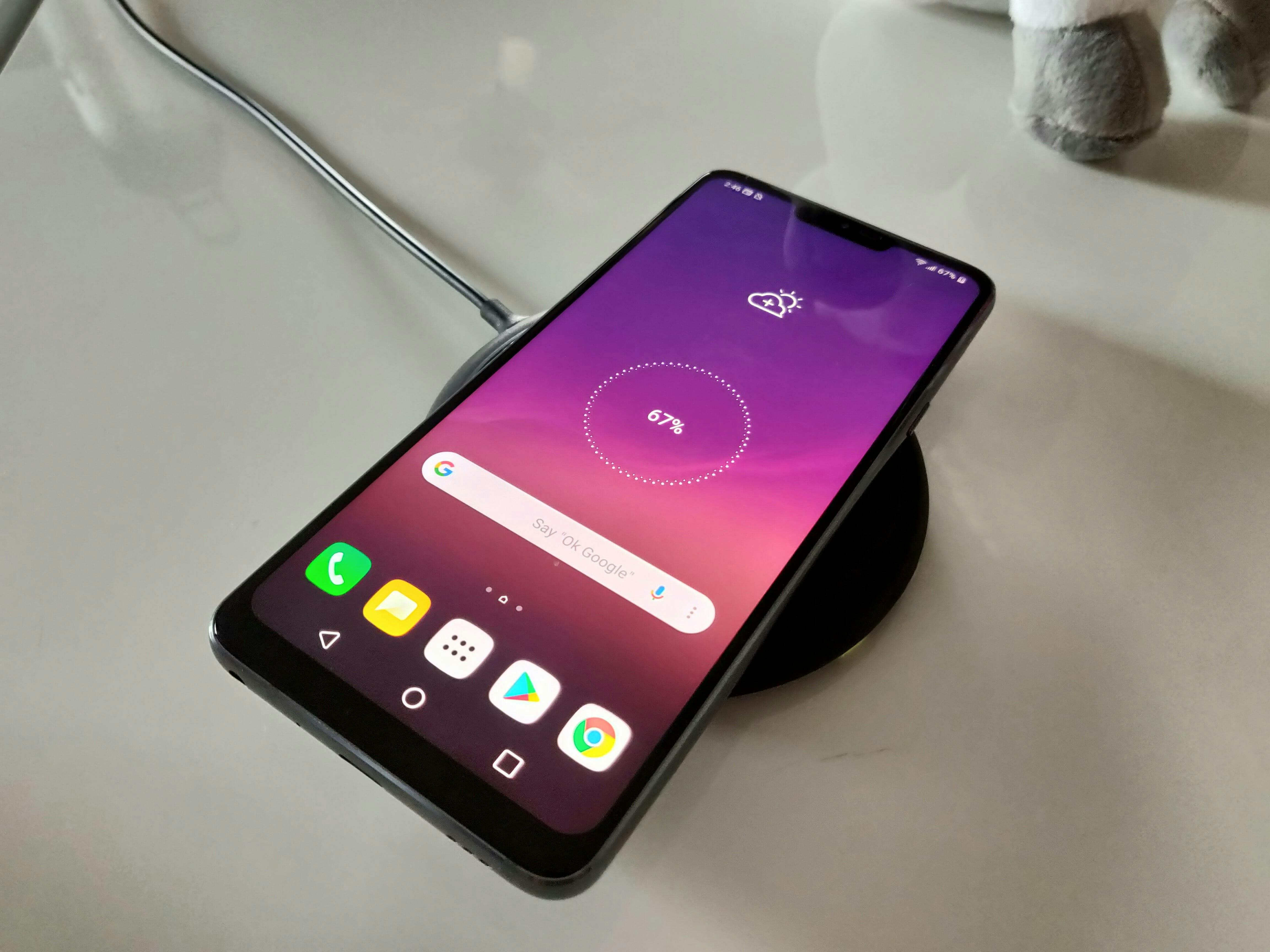
The all-glass G7 ThinQ supports Qi wireless charging, which means it’ll work with almost any charging pad on the market. It also supports the latest Quick Charge 4.0 standard so you can juice up the battery in a few hours.
READ MORE:
- The best apps for shooting and editing selfies
- The Best workout and fitness apps
- Google’s Project Fi is the best cellphone plan you’re not using
- The best Project Fi phones, ranked
Should you buy the LG G7 ThinQ?
No, probably not. There is no standout reason to recommend the LG G7 ThinQ over the competition or even its predecessors. It’s still an excellent phone by all standards. Its camera is very capable, the LCD panel is a joy to look at, LG’s hardware design is tried-and-true, and even the user interface is mostly enjoyable this go around.
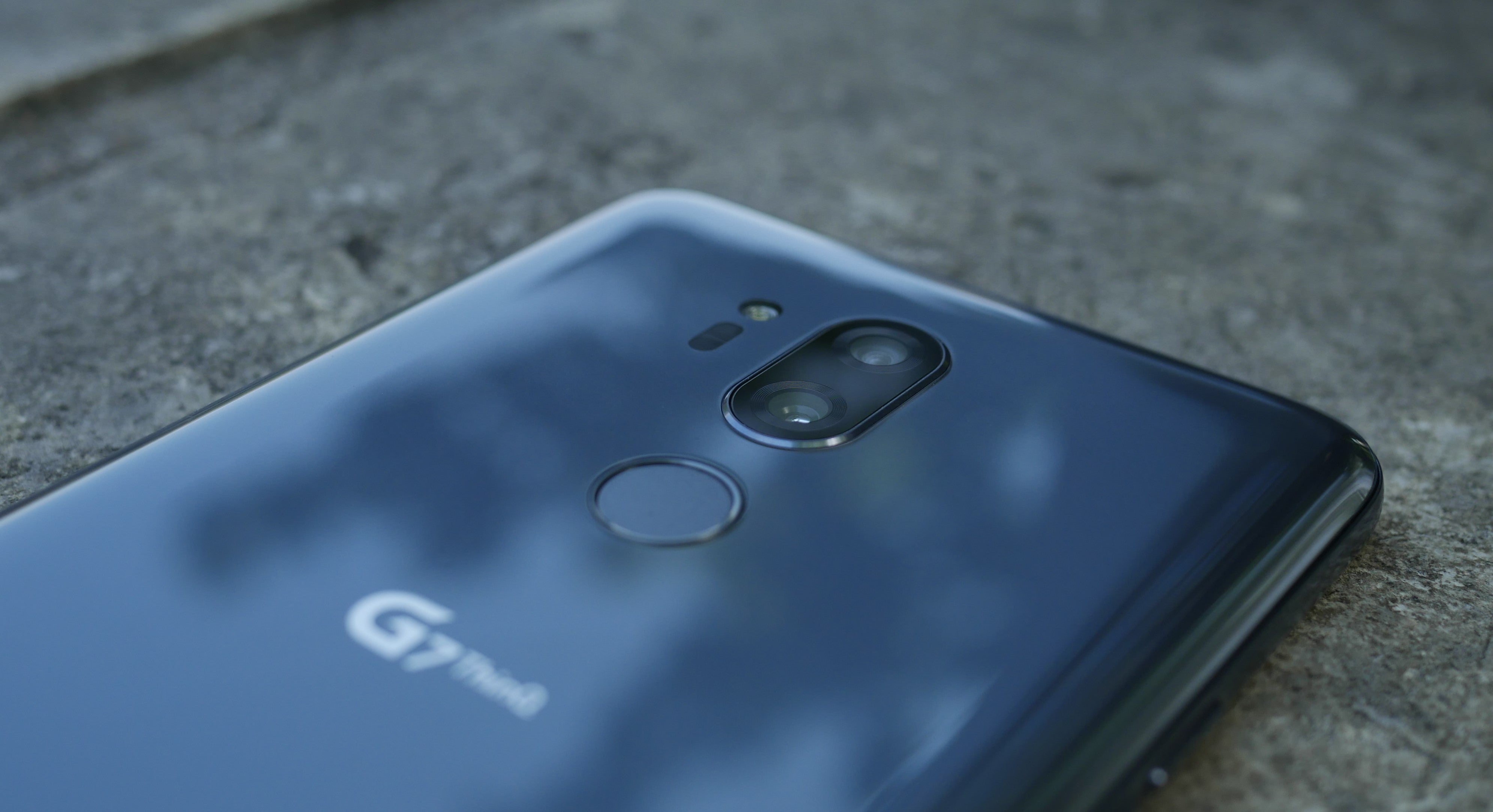
But the G7 ThinQ just doesn’t feel different enough. It’s an iteration of past devices with a confusing name and empty promises of AI. The conservative approach means the G7 comes with the baggage of past LG phones: Battery life is average, the hyped speaker produces disappointing sound quality, and the company’s software skin feels sluggish at times.
At $750 unlocked, the G7 ThinQ is a tough sell. If you’re looking for the best Android smartphone, we recommend the Galaxy S9 or the Pixel 2 XL. If you’re a fan of LG, we suggest waiting for the inevitable price cuts coming to the G7 ThinQ’s excellent sibling, the V30.

